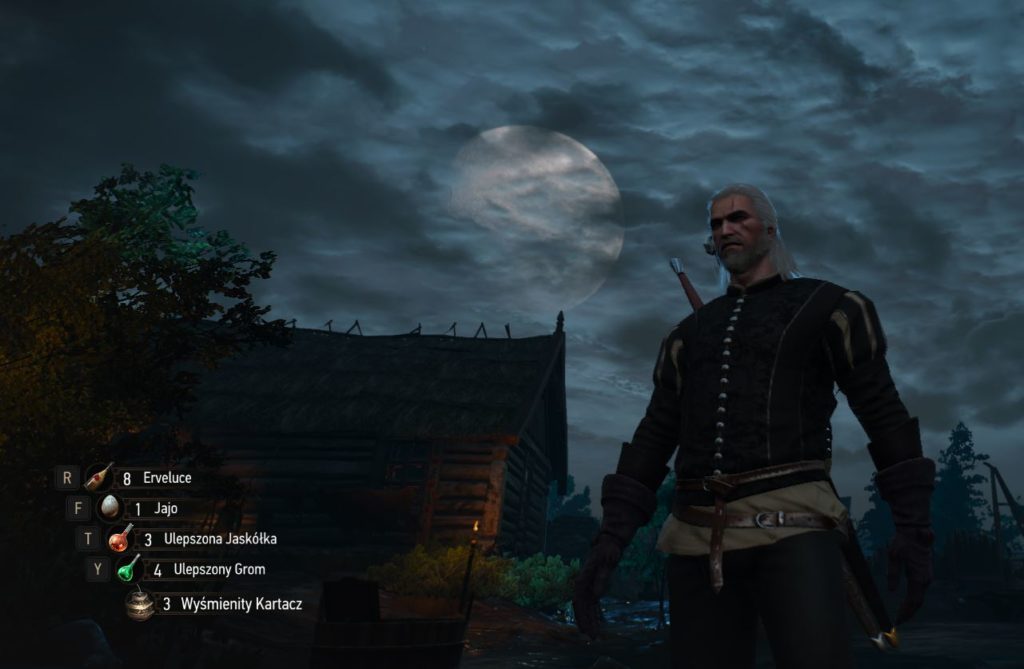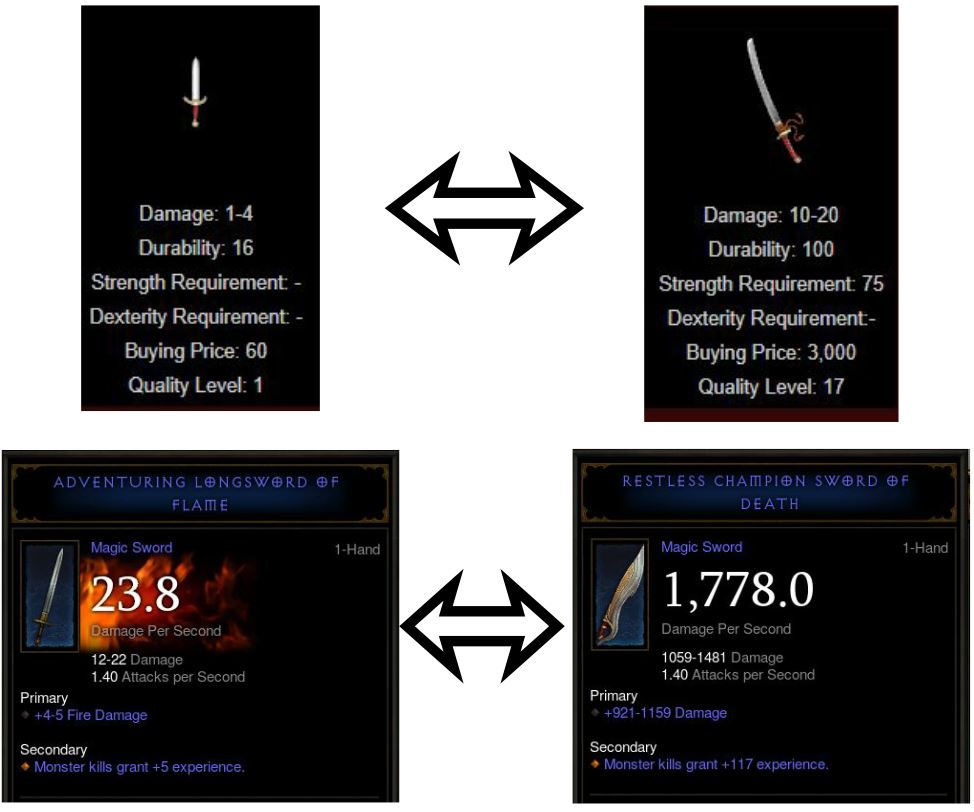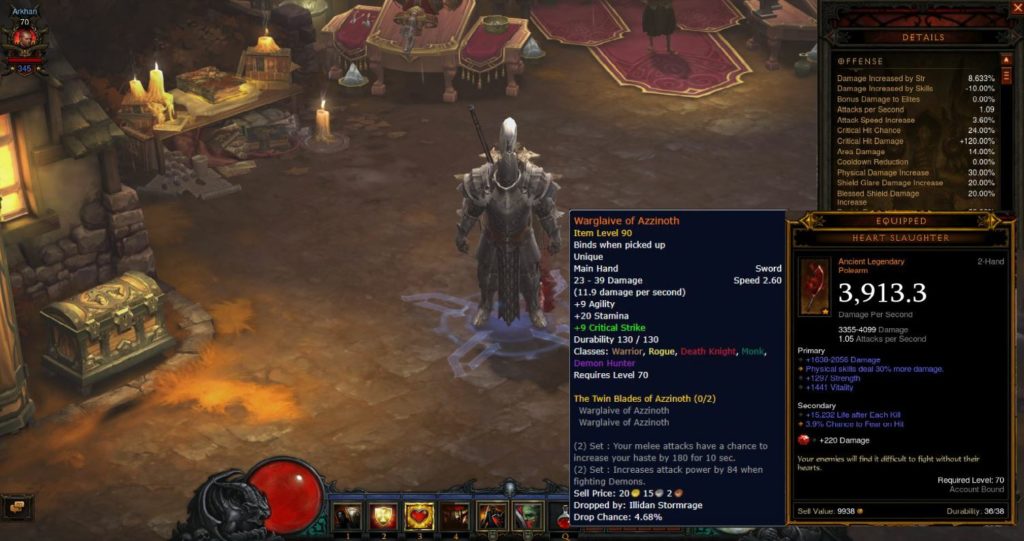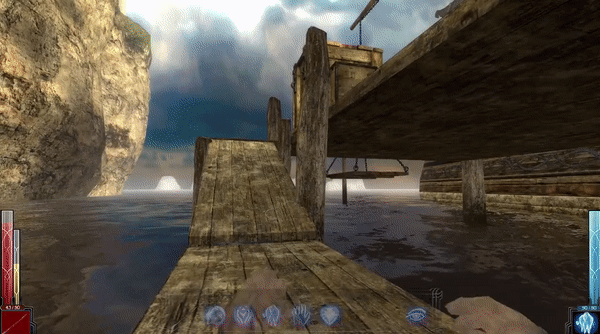My favourite game mechanics, features and philosophies
Gaming, as any hobby, seems to be governed by the same rules as other forms of human behavior. We form habits based on the patterns we enjoy and we push away aspects that we perceive as annoying.
As a child of the 80’s and a teen during the 90’s I was exposed to games and activities that were less casual. Any success required certain level of dedication from the player. While today everyone seems to be enjoying games in their many diverse forms, back then pretty much every game was on the hardcore side. By the mid 90’s most people had access to a computer, but dedicated gamers were few and far between.
This introduction might at first glance look like a way of saying that “old school was better”, “games today are far too easy” and “my more hardcore preferences are better than those of casuals”. But this is in fact far from the truth. I believe we are a product of our upbringing, and the use of the word “product” is fully intentional. Many, but not all, of our choices stem from what we call “free will”. Instead sometimes “things just happen”.
You have a game night with your friends and you form particularly fond memories connected to that experience. Playing similar games in the future may “take you back” to that joyful moment and you may levitate towards such games, even if unconsciously. If you are especially talented at a game, your friends will undoubtedly recognize this fact. This way everything related to this game may become, in a way, incorporated into your self-image for many years to come. You manage to find a hidden treasure chest in an online RPG and the dopamine rush will make sure you will try to replicate this experience in the future.
So how have all the conscious and accidental events of my gaming life shaped me? It is hard to remember exactly when and where certain game mechanics gripped me in that definite way. But I can try to trace this process backwards in two ways. First, by looking at my favorite games, those I hold dear to this very day. These are the games that I could pick up any evening and play the entire night having loads of fun. Second, by analyzing mechanics I am most passionate about and which most frequently come back in my own designs.
My most favorite games I will list in another blog entry. Today I present (subjectively) the best game mechanics and design philosophies that inform my gaming choices and my game design*.
Best game mechanics and design philosophies (according to me)
Risk vs reward
Not exactly a feature, but a philosophy that not only is crucial to my gaming experience. It also has a profound significance to my understanding of how the world works. I believe that without risk there is no true reward, and that holds especially true in the context of gaming. The enjoyment of triumph needs to go hand-in-hand with risks that needed overcoming. Elements of risk vs reward are present in low level play (deciding whether to rush the enemy or play defensively) as well as in the general strategy for climbing competitive ladders, where a win or loss may have a significant impact on the player’s final standing. To me risk vs reward is a fundamental dynamic that I will always refer to, both in my reviews, analyses, as well as in my own designs.

Choice
Choice has become a buzzword for game developers as of late. To me choice is not only relevant to the ways the player attempts to solve a problem. Do I fight the enemy, sneak past him, bribe him, make the enemy my friend? It is also important in the context of the long term results of such actions. If I am friends with a bad guy what happens to my relations with the good guys? Of course choice is not really applicable in all genres. But for games that benefit from the implementation of meaningful choices it is really important to think the designs through. Otherwise we end up with superfluous options that do not influence the game in an expected manner. Example: conversation systems in Fallout 4 vs Fallout New Vegas.
Consequence
Consequence is the immediate effect of having choice. If different choices do not produce distinct outcomes, are they really choices or just a facade of an undeveloped system? Do you know the pain of playing a second playthrough of a game, when consciously making different choices does not yield a different result? I know I have been in such a situation many times.
Being able to witness the effects of one’s actions in a tangible, definite way makes the gamer more immersed in a virtual world. The vivid reactions to my actions by the Vampire: Bloodlines characters will always be a benchmark for me. I have similar feelings for decision making in the first Witcher game. Only the second and many subsequent playthroughs made me realize how many dynamic elements there are to the storyline.
On the other end of the spectrum we have the most recent Bethesda RPGs. Nothing you do in those games really matters for the way you are perceived within the world. Fallout 4 tried to introduce dynamic dialogue choices in the form of a wheel, but in most cases the choices are superficial.
Relevance
When a major system is implemented in a game it should, in my opinion, be implemented in a way that is somewhat proportionate to other systems. To exemplify what I mean I will use the food system from Witcher 3.
Witcher 3 is game full of wonderful, complex systems. From combat and magic, through crafting and alchemy, to the exploration of a large and open world. Yet we have to deal with a food system that does disservice to lore, immersion and an overall sense of logic. In a world, where elixirs have a toxic effect on your body and you need to carefully manage their use, you can also devour 30 whole chickens in a single fight just to keep your health regen going. What is more, the values on the foods are off-the-chart. A chicken sandwich has as much effect as a whole chicken and water is more expensive than pepper vodka.
A similar situation exists in World of Warcraft. The whole discipline of cooking basically only serves as a way to buff your stats before a raid.

Clean calculations
This concept is related to the way in which a game’s model is expressed using numerical values. Yes, this applies to any game. Even the earliest games like Space Invaders used numerical values to tweak the behaviors, hit points or score values. And for me, these numbers absolutely need to make sense for a game world to feel immersive.
In general, the lower the values used, the easier it is to understand the system. This is especially true for itemization. The closer the values of lowest and highest quality items are to each other, the easier it is to keep the numbers in check. To better visualize the issue, let us compare the relative gap between two items in a sword category in Diablo I and Diablo III – low level and max level swords (in Diablo 1 daggers belonged to the sword category).

Diablo 3’s items grow in power to such a degree that low level statistics are meaningless. Please note, that the presented numbers for Diablo 3 are still not the extreme values, just the smallest values I could find in a relatively short period of time. The more accurate comparison would be between 4.2 dps on a common shortsword to approx. 4300 dps on an ancient legendary item.
In Diablo I we can clearly see the progression in strength of the weapon. Yet we can also see a limit to that weapon’s power. In Diablo III the huge jump in damage output necessitates the huge increase of other corresponding stats. This leads to curious situations where a level 70 spider is much more powerful than hundreds of low level demons.
The violation of logic and elegant design might be overlooked if the game is good in other areas. But the big numbers will still forever haunt the designers. To see this in action, do read about several “stat squishes” that World of Warcraft devs had to implement. Without those squishes they would not be able to even release new expansions.

Systemic design
Games that feature the principles of systemic design allow the players to use specific interactions with the game world consistently, whenever the players meet specific requirements.
In Far Cry 2 grass burns whenever we subject it to fire. The wind will blow the fire in different directions, spread it to trees, enemy camps and the enemies themselves. In Dark Messiah of Might and Magic we may subject enemies to different forces. These forces may cause enemies to slip, fall or become impaled on sharp objects. In Divinity Original Sin the elemental interactions are the major focus of the combat system – water freezes and conducts electricity. It also puts out fire, but high temperature might cause it to evaporate and release steam which blocks visibility.
The interactions described above are consistent through the whole playthrough. This way the players learn to function within these rules and use them to their advantage. Contrast this with water and fire systems in Skyrim. It is clearly visible, that Skyrim’s systems are designed exclusively for damaging players and NPCs. They are purely cosmetic and provide no meaningful interaction with the game world. Also, the ability to move physical objects serves a very cosmetic purpose and has very little actual influence on gameplay. Incorporation of systemic design is very difficult, but also makes games more engaging in the end.

Permadeath and Ironman
Permanent death is without a doubt a controversial feature. Some love it, many hate it. And as for me, I cannot live without it. In its most simple form permadeath implies the end of gameplay session when the player character “dies” (or triggers any loss condition).
Most 8-bit era games were in a sense permadeath. With no Save option you expended a fixed number of “lives” and in case of failure had to start all over again. Permadeath today is usually an optional feature for players who crave additional doses of adrenaline. It also means that this feature is included in games which are not designed with permadeath in mind. It is a popular addition to ARPGs and RPGs in general, but other genres also use elements of permadeath**.
Similar to permadeath is the ironman philosophy, which is quite popular in strategy games. It usually takes the form of “non-player managed Save game”, where the game does not allow a player to save and keeps only a single, most recent save file. This creates a situation where the player has to accept all the choices made and live with the consequences of suboptimal decisions without the ability to reload a previous save file to correct mistakes. This way a walkthrough may become unwinnable.
In Mount and Blade your army will be decimated after a lost battle. Your soldiers will die or go into slavery, you will lose some money and gear and you will also be enslaved. This basically resets your progress in building an effective fighting force without necessarily making you restart a playthrough. In Xcom (2012) every operative may get wounded and killed. Losing an experienced agent is a tough blow, as replacing him with a new rookie leaves you behind in an ongoing arms race with the aliens. Too many losses may initiate a death spiral that you won’t be able to stop and the campaign will be lost.

Summary
To sum it all up, I like my games hard and unforgiving, with meaningful choices and visible consequences of action. I like it when numbers in game systems do not get out of hand and are easy to understand. I like it when game systems are there for a reason and when participating in in-game activities has some meaning in the game world. But all this has to be well thought out and the risk factor has to be properly balanced. In my other posts I will try to elaborate on each of the issues described above in more detail.
*It should be noted that I would be mostly analyzing RPG, FPS and strategy games. When I talk about e.g. choices and consequence it is obvious that casual games like Candy Crush will not benefit from added layers of complexity.
**In 1999 Counter-Strike took the FPS world by storm, in part due to one of its mechanics that was uncommon to the FPS stage at that time – when you died during a round, you stayed dead for that whole round. There was no respawn after a few seconds like in other popular games of that period (Unreal Tournament and Quake 3). The current explosion of popularity of Battle Royale games is also testament to how thrilling it is to try to stay alive.





Recent Comments